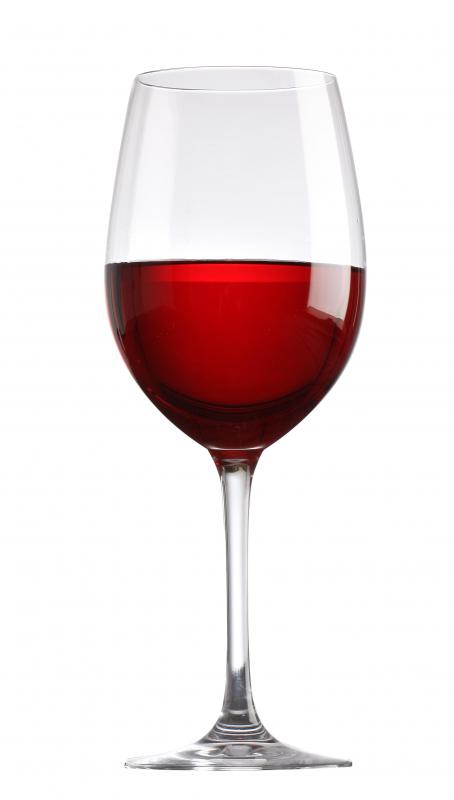At DelightedCooking, we're committed to delivering accurate, trustworthy information. Our expert-authored content is rigorously fact-checked and sourced from credible authorities. Discover how we uphold the highest standards in providing you with reliable knowledge.
What are the Different Types of Wine?
While some people might assume different types of wine are segregated merely into reds and whites, this is an oversimplification. While red and white wines have their differences, it is the variety within each group that reveals something about its taste. Although prices range from very cheap to extremely expensive, it is not necessary to spend a fortune for good wine.
Generally speaking, white wines go well with seafood, chicken, turkey, Chinese food and some pork dishes. Red wines go well with red meats such as beef, roasts and filets, lamb, duck, veal, pastas and sausages. This rule is not absolute, however.

Some types of white wine might go very well with red meat, while a particular red could be the perfect complement to your seafood cuisine. Generalizations are simply guidelines developed by professionals within the wine community, and individuals should feel free to experiment with different types of wine and food combinations.
Various types of wine are made and imported from all over the world. To list them all would be an all-consuming task, but a look at a smaller sample within the United States might be helpful. In particular, California wines have become widely known due to the state's excellent conditions for growing and harvesting certain wine grapes. Of the many types of wine that California produces, people can find chardonnay, French colombard, gewurztraminer, Johannisberg riesling, and sauvignon blanc among the whites. White wines range in style from bone dry to sweet and are usually not aged in wood barrels to preserve freshness and taste. Chardonnay can be the exception, as many are aged in oak.

At the other end of the spectrum are red wines. California produces cabernet sauvignon, merlot, petite syrah, pinot noir, zinfandel and blush wines. These wines tend to be more dry and are slightly more acidic. Red wines are commonly aged in wood for a complex, deep flavor, or are produced with a light, fruity flavor. Pure grape juice is naturally clear, so red wines gain their color from the skin of the grapes.
Whether red or white, there are plenty of flavorful types of wine to satisfy the desire of any palette. Consumers should try not to limit themselves to just one variety, even if they enjoy it, since there is a wide world of wines to explore.
AS FEATURED ON:
AS FEATURED ON:
















Discussion Comments
I would try the red wine. The red wine has a good flavor but it only goes with some meals/ Like you can't drink red wine with PB&J, so maybe just try it with red meat or steak -- something like that.
Putting aside the taste buds for a moment, for health reason, it is better to drink red wine with red meat.
The red wine, or rather the polyphenols in red wine interfere with the substance in red meat that is known to cause all kind of health issues and illnesses, such as cancer for example.
In response to Malena's comment, I am sure that any sommelier would never force a wine upon you should you enjoy a different one to what they recommend with the food.
While in many cases it is true that many red wines do match well with red meat and white wines with seafood, it is not always the case and that is why you are free to develop your nose and palette according to what you prefer.
It is wonderfully refreshing and also surprising to note how the different wines affect the taste of certain foods when they are paired with them, hence the sommelier is at your disposal to offer expertise when choosing a wine to match with certain foods.
Some foods can make wine taste acidic and some foods coat your tongue so that your tastebuds cannot detect the flavor of the wine and your sommelier would probably offer you a wine to suitably match and balance the weight and flavor of the food so as to offer you maximum enjoyment of them both.
It is not a rule, but merely a guideline especially for new wine drinkers who have not yet discovered the palette for tasting wines, so you should feel free to experiment and enjoy those wines that you do with any food.
Perhaps a sommelier would disagree, but I don't follow the red meat - red wine, white meat - white wine rule. If you like the wine, then you'll like it with the meal. For those people that only like one kind of wine, e.g., white, there's no reason you can't drink it with any kind of meal you may have!
Post your comments